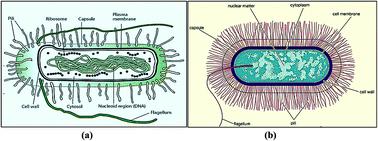当前位置:
X-MOL 学术
›
Nanoscale Adv.
›
论文详情
Our official English website, www.x-mol.net, welcomes your
feedback! (Note: you will need to create a separate account there.)
Super protective anti-bacterial coating development with silica–titania nano core–shells
Nanoscale Advances ( IF 4.6 ) Pub Date : 2020-08-03 , DOI: 10.1039/d0na00387e Jaya Verma 1 , A S Khanna 2 , Rachana Sahney 3 , Arpita Bhattacharya 1
Nanoscale Advances ( IF 4.6 ) Pub Date : 2020-08-03 , DOI: 10.1039/d0na00387e Jaya Verma 1 , A S Khanna 2 , Rachana Sahney 3 , Arpita Bhattacharya 1
Affiliation

|
In the present study, we have developed an anti-bacterial as well as mechanically-strengthened super protective coating material, which can be used as a marine antifouling paint. In this research, silica, titania and silica–titania core–shell nanoparticles were individually prepared via sol–gel and peptization processes. The idea behind the synthesis of core–shell nanoparticles was to utilize the mechanical strength of silica and the antimicrobial property of TiO2 together. These nanoparticles were characterized via dynamic light scattering, UV-Visible spectroscopy, X-ray diffraction, scanning electron microscopy, energy-dispersive X-ray spectroscopy, transmission electron microscopy and X-ray photoelectron spectroscopy. Coating formulations were developed with two types of model binders, i.e., solvent-based polyurethane and water-based poly-acrylic, containing all nanoparticles individually at various concentrations for a better comparative study. These coating formulations were applied onto mild steel for anti-bacterial testing that was performed against Escherichia coli and Bacillus. The nanoparticle concentration was varied from 1% (wt) to 6% (wt). The best anti-bacterial result was obtained with 4% (wt) of silica–titania core–shell nanoparticles prepared via the peptization process among all the nanoparticles. The scratch testing was performed successfully using an Erichsen scratch tester; the formulated PU coating passed up-to 20 N load with good adhesion, impact resistance, flexibility and has shown satisfactory anti-corrosion performance.
中文翻译:

二氧化硅-二氧化钛纳米核壳超防护抗菌涂层的开发
在本研究中,我们开发了一种抗菌且机械强化的超级防护涂层材料,可用作海洋防污涂料。在这项研究中,通过溶胶-凝胶和胶溶过程分别制备了二氧化硅、二氧化钛和二氧化硅-二氧化钛核-壳纳米颗粒。合成核壳纳米粒子的想法是同时利用二氧化硅的机械强度和 TiO 2的抗菌特性。通过动态光散射、紫外-可见光谱、X射线衍射、扫描电子显微镜、能量色散X射线光谱、透射电子显微镜和X射线光电子能谱对这些纳米粒子进行了表征。涂料配方是用两种类型的模型粘合剂开发的,即溶剂型聚氨酯和水性聚丙烯酸,其中包含不同浓度的所有纳米颗粒,以便更好地进行比较研究。将这些涂料配方应用于低碳钢上,进行针对大肠杆菌和芽孢杆菌的抗菌测试。纳米颗粒浓度从 1% (wt) 到 6% (wt) 不等。在所有纳米粒子中,通过胶溶过程制备的二氧化硅-二氧化钛核-壳纳米粒子获得了最好的抗菌效果。使用Erichsen划痕测试仪成功地进行了划痕测试;配制的PU涂层可通过高达20N的载荷,具有良好的附着力、抗冲击性、柔韧性,并表现出令人满意的防腐性能。
更新日期:2020-09-16
中文翻译:

二氧化硅-二氧化钛纳米核壳超防护抗菌涂层的开发
在本研究中,我们开发了一种抗菌且机械强化的超级防护涂层材料,可用作海洋防污涂料。在这项研究中,通过溶胶-凝胶和胶溶过程分别制备了二氧化硅、二氧化钛和二氧化硅-二氧化钛核-壳纳米颗粒。合成核壳纳米粒子的想法是同时利用二氧化硅的机械强度和 TiO 2的抗菌特性。通过动态光散射、紫外-可见光谱、X射线衍射、扫描电子显微镜、能量色散X射线光谱、透射电子显微镜和X射线光电子能谱对这些纳米粒子进行了表征。涂料配方是用两种类型的模型粘合剂开发的,即溶剂型聚氨酯和水性聚丙烯酸,其中包含不同浓度的所有纳米颗粒,以便更好地进行比较研究。将这些涂料配方应用于低碳钢上,进行针对大肠杆菌和芽孢杆菌的抗菌测试。纳米颗粒浓度从 1% (wt) 到 6% (wt) 不等。在所有纳米粒子中,通过胶溶过程制备的二氧化硅-二氧化钛核-壳纳米粒子获得了最好的抗菌效果。使用Erichsen划痕测试仪成功地进行了划痕测试;配制的PU涂层可通过高达20N的载荷,具有良好的附着力、抗冲击性、柔韧性,并表现出令人满意的防腐性能。










































 京公网安备 11010802027423号
京公网安备 11010802027423号